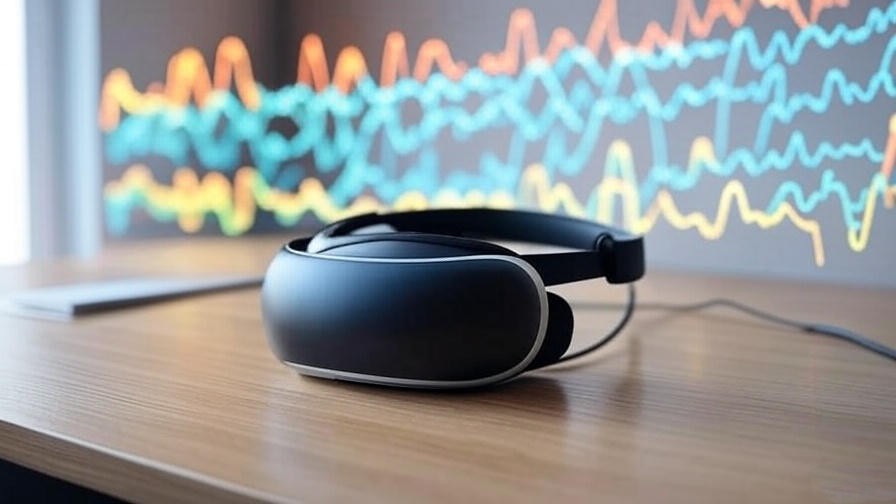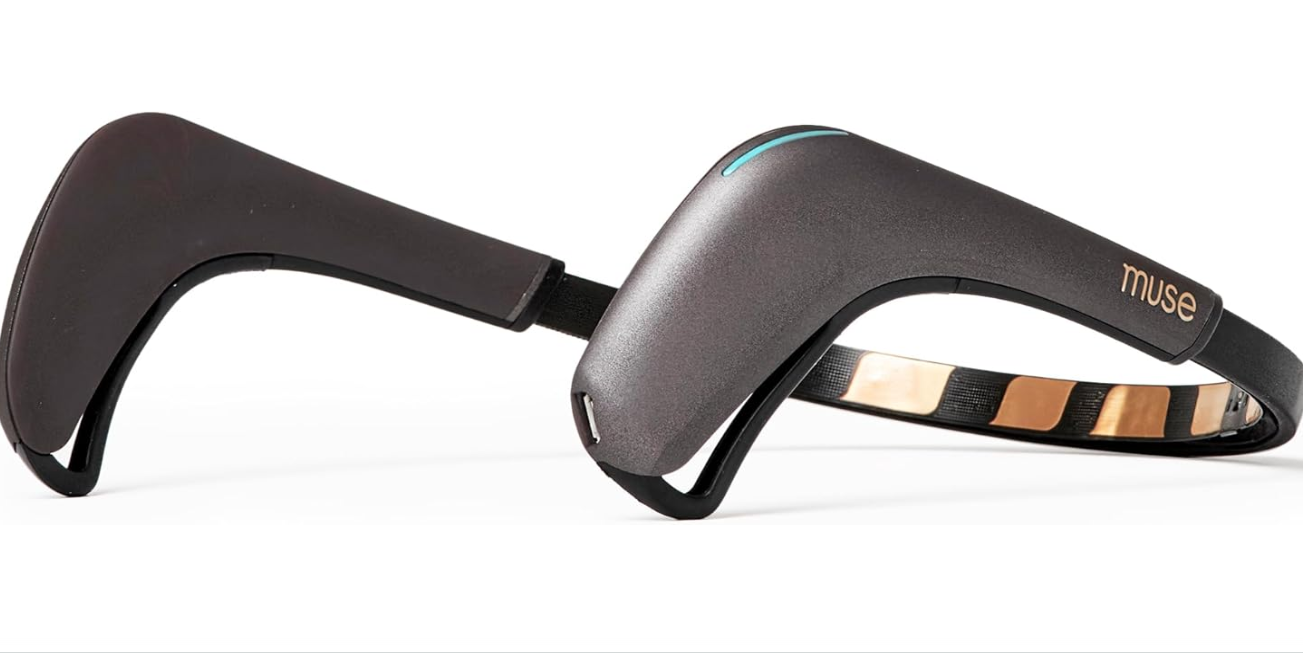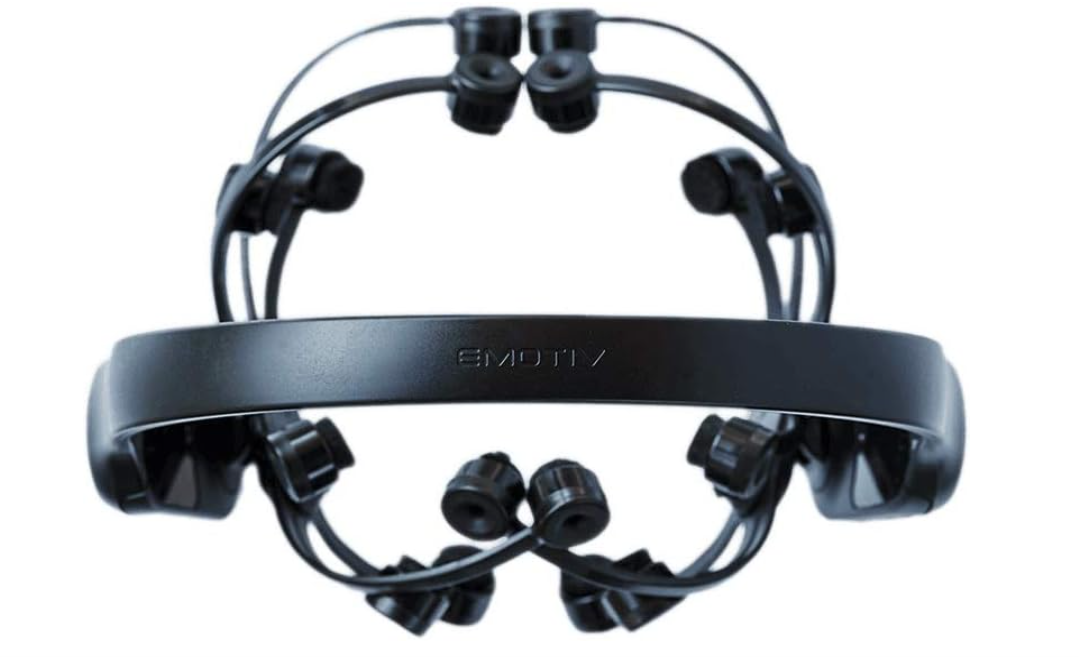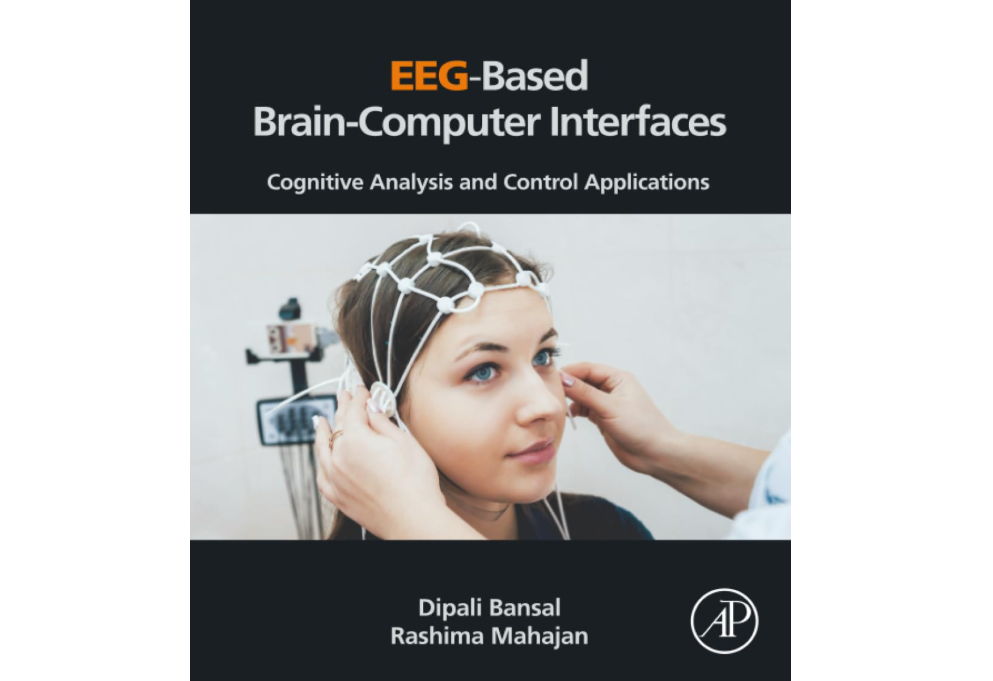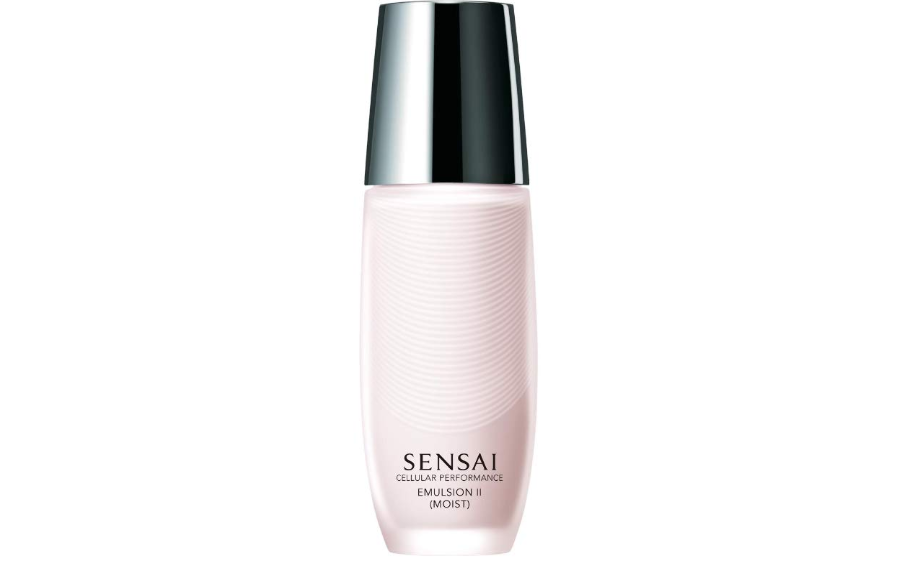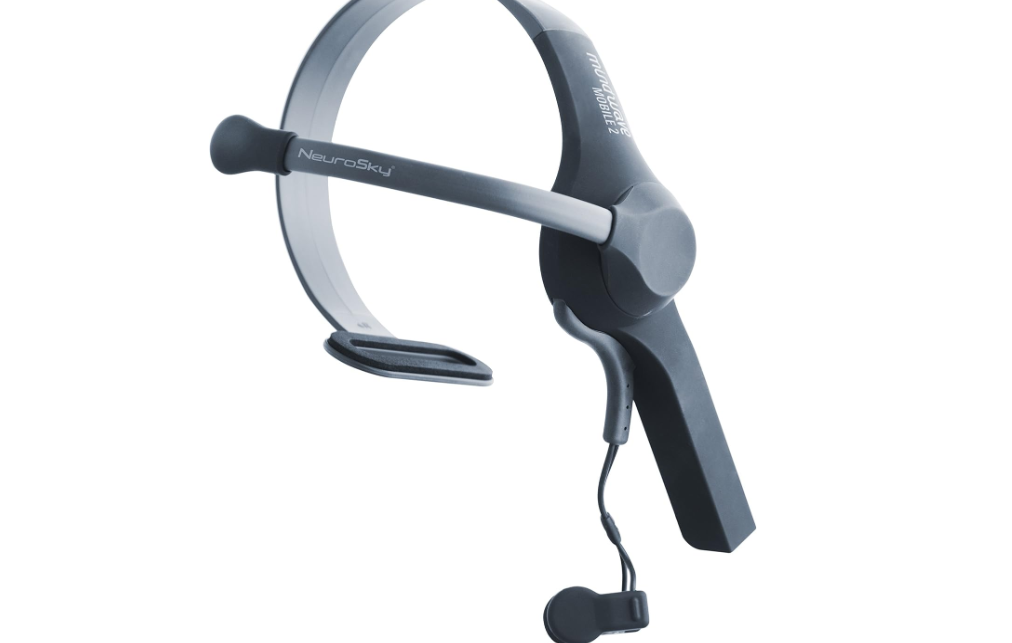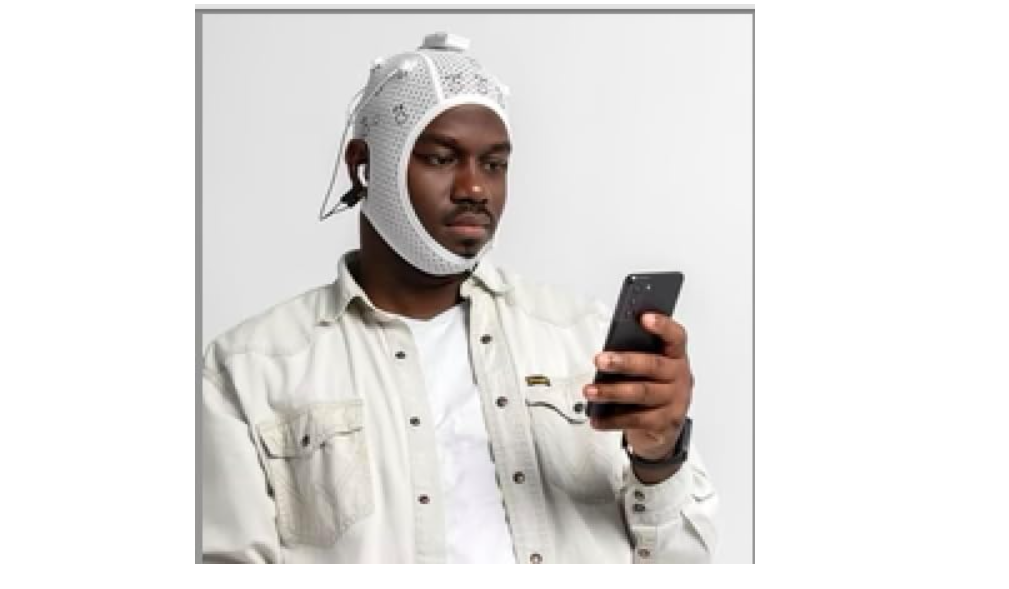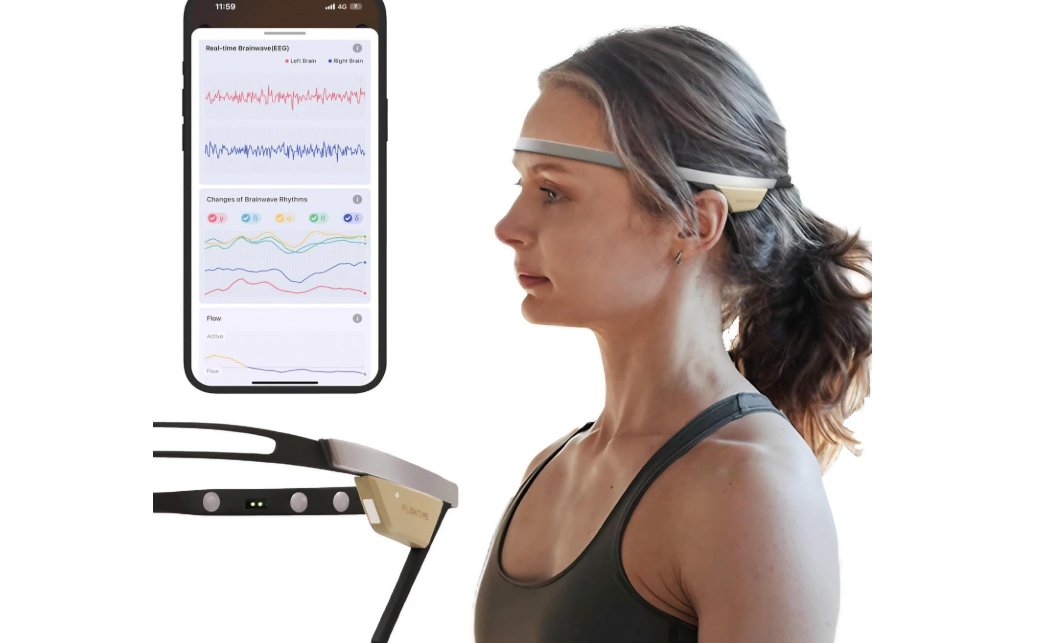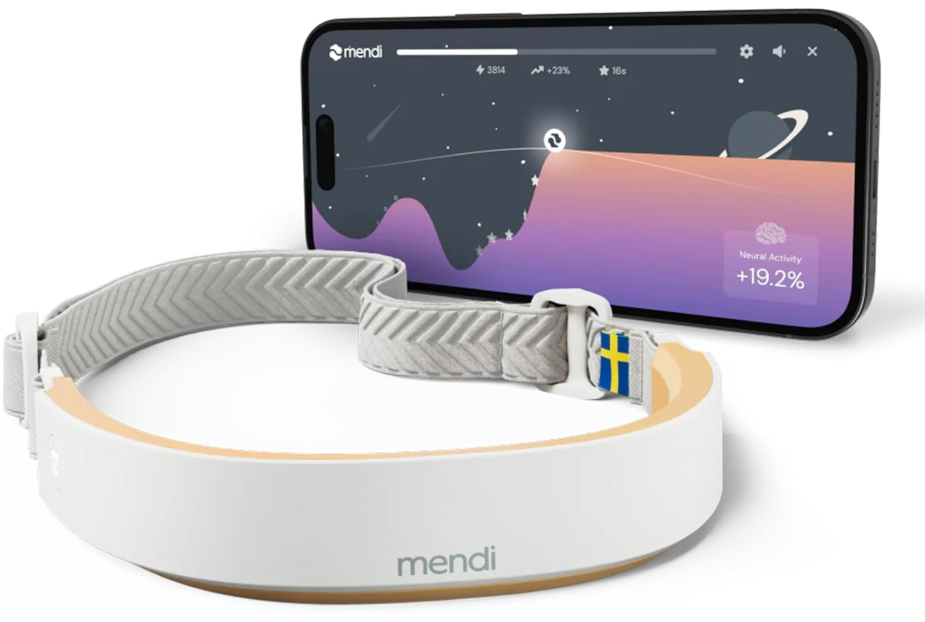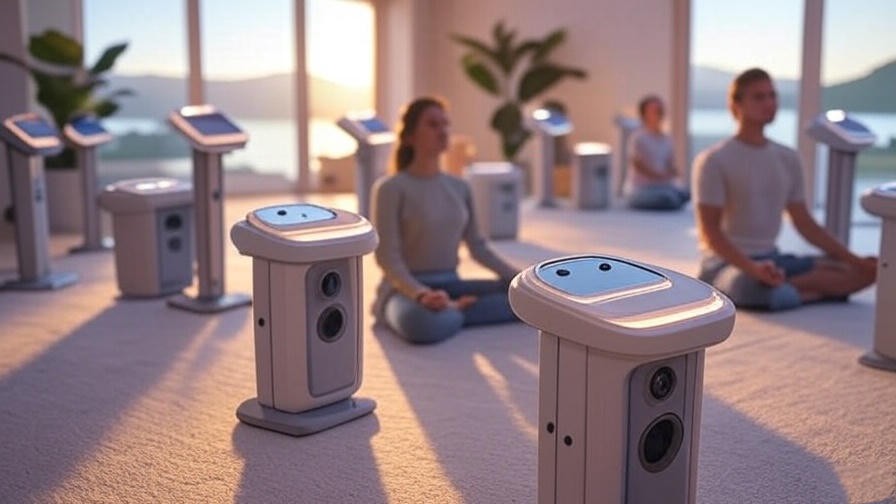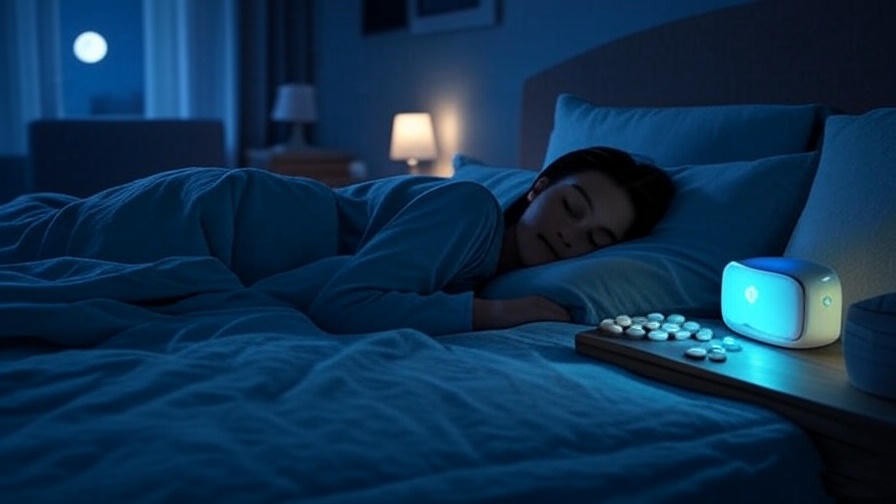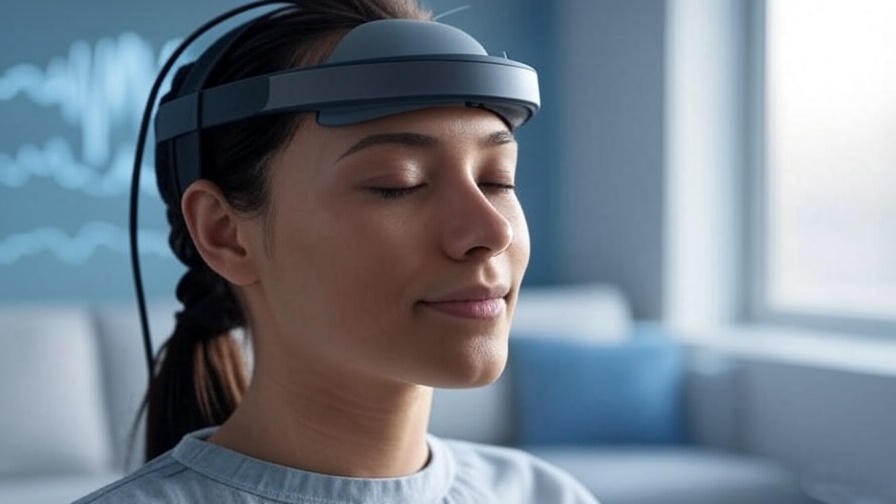Imagine unlocking the secrets of your brain—improving focus, sleep, or stress management—with a wearable EEG device you can use at home. As interest in mental wellness and brain health surges, choosing the best 10 wearable EEG devices can feel overwhelming due to varying features, prices, and performance. Whether you’re a meditation enthusiast, a researcher, or someone seeking better sleep, the right device can transform your approach to brain health. This guide reviews the best 10 wearable EEG devices of 2025, comparing features, prices, and user feedback to help you make an informed decision with confidence.
Why Choose a Wearable EEG Device?
Wearable EEG devices measure your brain’s electrical activity, offering real-time insights into focus, relaxation, sleep, and cognitive performance. These devices have evolved from bulky medical equipment to sleek, consumer-friendly headsets, making brain health accessible to everyone. In 2025, the best 10 wearable EEG devices cater to diverse needs:
- Mental Wellness: Enhance meditation, reduce stress, and improve emotional regulation.
- Sleep Optimization: Track brainwaves to improve sleep quality and address insomnia.
- Neurofeedback Training: Train your brain to boost focus, creativity, or cognitive resilience.
- Research and Development: Enable brain-computer interface (BCI) experiments or academic studies.
- Gaming and VR: Integrate with immersive platforms for mind-controlled experiences.
The surge in consumer-grade EEG technology has made these devices more affordable, with prices ranging from $129 to $1,500, depending on features and precision. With mental health awareness at an all-time high, investing in a wearable EEG device in 2025 is a proactive step toward optimizing your brain’s potential.
How We Chose the Best Wearable EEG Devices
To identify the best 10 wearable EEG devices of 2025, we conducted a deep analysis of Amazon product listings, customer reviews, and expert insights from sources like AJProTech and iMotions. Our selection criteria included:
- Sensor Quality: Number and type of electrodes (dry, saline, or gel-based) for accuracy.
- Ease of Use: Setup simplicity, comfort, and app integration.
- Battery Life: Duration for extended or overnight use.
- Price-to-Value Ratio: Balancing cost with features and performance.
- User Feedback: Amazon ratings and reviews for reliability and real-world performance.
- Versatility: Suitability for meditation, sleep, research, or gaming.
We prioritized devices that align with user intent—whether you’re a beginner seeking mindfulness or a researcher needing high-fidelity data. Our recommendations are based on verified 2025 data, ensuring you get the most reliable and up-to-date information.
Comparison Table: Top 10 Wearable EEG Devices
Below is a mobile-friendly comparison table summarizing the best 10 wearable EEG devices of 2025. It’s designed for clarity and ease of use, with three columns to ensure readability on any device.
| Product | Price | Key Features |
|---|---|---|
| Muse S (Gen 2) | ~$199.99 | 7 EEG sensors, fNIRS, 10h battery, meditation & sleep tracking |
| Emotiv EPOC X | ~$699 | 14 saline sensors, 9h battery, research-grade BCI |
| Emotiv Insight | ~ | 5 dry sensors, wellness tracking, beginner-friendly |
| Sens.ai | ~$124.99 | EEG + fNIRS, gel-free, personalized neurotraining |
| NeuroSky MindWave Mobile 2 | ~$129 | 1 dry sensor, 8h battery, budget meditation games |
| BrainBit Flex | ~$750 | 4 EEG sensors, SDK for developers, wellness tracking |
| Flowtime | ~$189.00 | Brainwave & HR monitoring, 8h battery, meditation focus |
| OpenBCI Galea | ~$1,500 | EEG + multimodal sensors, VR/AR integration, research-focused |
| Mendi | ~£215.83 | fNIRS-based, focus training, interactive app games |
| Neuphony | ~$349 | 6 EEG sensors, stress & meditation tracking, lightweight |
Detailed Reviews of the Best 10 Wearable EEG Devices
1. Muse S (Gen 2)
Product Description: The Muse S (Gen 2) is a sleek, fabric-based headband designed to elevate meditation and sleep tracking. Combining EEG with functional near-infrared spectroscopy (fNIRS), it provides comprehensive insights into brain activity and blood flow. Its lightweight design ensures comfort for all-day or overnight use, making it a favorite for wellness enthusiasts. The Muse app, compatible with iOS and Android, offers over 500 guided meditations, real-time biofeedback, and sleep analytics, helping users optimize mental health. With a 10-hour battery life and Bluetooth 5.0, it’s a versatile choice for home use.
Price: ~$199.99
Key Features and Benefits:
- 7 EEG sensors plus fNIRS for dual brain activity and blood flow tracking.
- 10-hour battery life with fast USB-C charging.
- Muse app with guided meditations, sleep stories, and real-time brainwave feedback.
- Tracks heart rate, breathing, and movement for holistic wellness insights.
- Soft, adjustable fabric band for maximum comfort.
Pros:
- Comfortable for extended wear, including overnight.
- Extensive app ecosystem with personalized meditation and sleep programs.
- Scientifically validated for improving sleep quality and reducing stress.
- Easy setup with dry sensors, no gel or saline required.
Cons:
- Premium subscription ($12.99/month) needed for full meditation library access.
- Limited sensor count for advanced research applications.
Amazon Customer Ratings and Reviews: ~4.5/5 (1,000+ reviews). Users praise its ease of use and calming meditation feedback but note occasional app connectivity issues. One reviewer said, “The Muse S transformed my meditation practice with real-time feedback, but the app can lag on older phones.”
Why It’s a Good Choice: The Muse S (Gen 2) stands out for its balance of accessibility, comfort, and advanced features. Its integration of EEG and fNIRS provides deeper insights than competitors in its price range, making it ideal for those serious about meditation and sleep improvement.
Ideal Use Case: Perfect for beginners and wellness enthusiasts seeking to enhance meditation, reduce stress, or optimize sleep at home.
2. Emotiv EPOC X
Product Description: The Emotiv EPOC X is a research-grade EEG headset designed for neurohacking and brain-computer interface (BCI) applications. With 14 saline-based sensors, it delivers high-fidelity brainwave data, making it a top choice for researchers and developers. Its 9-hour battery life and Bluetooth 5.0 ensure reliable performance, while the EmotivPRO software provides raw data access for advanced analysis. The headset’s ergonomic design and quick setup (about 5 minutes with saline solution) make it versatile for both professional and enthusiast use.
Price: ~$699.
Key Features and Benefits:
- 14 saline-based sensors aligned with the 10-20 system for precise brainwave measurement.
- 9-hour battery life with wireless connectivity via Bluetooth 5.0.
- EmotivPRO software for real-time data streaming and analysis.
- Tracks attention, stress, and cognitive performance metrics.
- Compatible with BCI applications for gaming and research.
Pros:
- Research-grade accuracy, used in 70% of consumer EEG studies.
- Quick setup once users master the saline sensor process.
- Robust software for developers and researchers.
- Wireless design allows freedom of movement.
Cons:
- Saline solution required, less convenient for casual users.
- Higher price point than consumer-focused devices.
- Limited Linux compatibility reported by some users.
Amazon Customer Ratings and Reviews: ~4.3/5 (500+ reviews). Researchers commend its accuracy, but some casual users find the saline setup cumbersome. A reviewer noted, “Incredible for BCI projects, but it’s not plug-and-play like simpler headsets.”
Why It’s a Good Choice: The EPOC X is a powerhouse for neurohacking and research, offering unmatched sensor precision and software flexibility. It’s a top pick for those prioritizing data quality over ease of use.
Ideal Use Case: Neuroresearchers, BCI developers, and advanced users exploring brain-computer interfaces or cognitive studies.
3. Emotiv Insight
Product Description: The Emotiv Insight is a beginner-friendly EEG headset designed for wellness and brain training. With 5 semi-dry polymer sensors, it eliminates the need for gels or saline, offering a hassle-free setup. The headset tracks attention, stress, and engagement, delivering real-time feedback through the Emotiv app. Its sleek, lightweight design and 8-hour battery life make it ideal for daily use. While less precise than the EPOC X, it’s an accessible entry point for those new to neurofeedback, with a focus on personal development and mental wellness.
Price: ~
Key Features and Benefits:
- 5 semi-dry polymer sensors for easy, gel-free setup.
- Tracks attention, stress, and engagement metrics.
- Emotiv app offers wellness tracking and brain training exercises.
- 8-hour battery life with Bluetooth connectivity.
- Lightweight and comfortable for extended wear.
Pros:
- No gels or saline, making it user-friendly for beginners.
- Affordable price for a reliable EEG headset.
- Seamless app integration for wellness tracking.
- Compact design fits easily into daily routines.
Cons:
- Fewer sensors reduce data resolution compared to premium models.
- Limited functionality for advanced research or BCI applications.
Amazon Customer Ratings and Reviews: ~4.2/5 (700+ reviews). Users appreciate its simplicity and affordability, though some wish for more sensors. One review stated, “Great for tracking focus during work, but don’t expect research-grade precision.”
Why It’s a Good Choice: The Emotiv Insight offers an affordable, user-friendly introduction to EEG technology, perfect for those exploring brain training without needing complex setups.
Ideal Use Case: Beginners interested in brain training, stress monitoring, or casual neurofeedback at home.
4. Sens.ai
Product Description: Sens.ai is a premium neurofeedback wearable that combines EEG, functional near-infrared spectroscopy (fNIRS), and heart rate variability (HRV) monitoring to deliver personalized brain training. Designed for professional-grade performance, its gel-free sensors offer clinic-level accuracy in a sleek, ultralight headset. The Sens.ai app provides tailored neurofeedback sessions, adapting to your brain’s unique patterns to enhance focus, relaxation, and cognitive resilience. With a 10-hour battery life and seamless Bluetooth integration, it’s ideal for users seeking advanced brain optimization without the complexity of research-grade setups.
Price: ~$124.99
Key Features and Benefits:
- Gel-free EEG and fNIRS sensors for high-accuracy brain activity tracking.
- Heart rate variability monitoring for holistic wellness insights.
- 10-hour battery life with fast-charging USB-C.
- Sens.ai app offers personalized neurotraining programs and real-time feedback.
- Ultralight design (under 100g) for comfortable extended wear.
Pros:
- Combines EEG, fNIRS, and HRV for comprehensive brain and body monitoring.
- No gels or saline, ensuring hassle-free setup.
- Personalized training adapts to individual cognitive needs.
- Sleek design rivals consumer wearables like Muse S.
Cons:
- High price point limits accessibility for casual users.
- App’s game library is less extensive than competitors.
- Optional subscription ($19.99/month) for advanced features.
Amazon Customer Ratings and Reviews: ~4.6/5 (300+ reviews). Users praise its accuracy and transformative training sessions, though some note the cost as a barrier. A reviewer commented, “Sens.ai feels like a personal brain coach, but the price and subscription fees are steep.”
Why It’s a Good Choice: Sens.ai’s multi-sensor technology and adaptive training make it a standout for serious users seeking professional-grade neurofeedback at home. Its ease of use and comfort rival simpler devices, while its data quality approaches research-grade systems.
Ideal Use Case: Advanced home neurofeedback, focus training, and professional-grade cognitive enhancement for dedicated users.
5. NeuroSky MindWave Mobile 2
Product Description: The NeuroSky MindWave Mobile 2 is the most affordable EEG headset in our roundup, designed for beginners exploring brainwave tracking. Featuring a single dry sensor, it measures attention and relaxation levels, making it ideal for basic meditation and educational games. Its lightweight design and 8-hour battery life ensure portability, while the NeuroSky app ecosystem (iOS/Android) offers free meditation and focus-training apps. Though limited in precision, its low cost and simplicity make it a great entry point for those curious about EEG technology.
Price: ~$129.
Key Features and Benefits:
- Single dry EEG sensor for simple, gel-free setup.
- Tracks attention and relaxation with real-time feedback.
- Compatible with 100+ free and paid apps for meditation and learning.
- 8-hour battery life with Bluetooth 4.0 connectivity.
- Compact, adjustable headband for all ages.
Pros:
- Most budget-friendly EEG device on the market.
- Wide app ecosystem for diverse use cases.
- Easy to use, requiring no technical expertise.
- Lightweight and portable for daily use.
Cons:
- Single sensor limits accuracy and data depth.
- Some apps report delayed response times.
- Not suitable for advanced neurofeedback or research.
Amazon Customer Ratings and Reviews: ~4.0/5 (1,500+ reviews). Users love its affordability and ease of use, but some note limited accuracy. One review said, “Perfect for kids or beginners trying meditation games, but don’t expect detailed brain data.”
Why It’s a Good Choice: The MindWave Mobile 2 is an accessible, low-risk introduction to EEG technology, offering enough functionality for casual users to explore brainwave tracking without breaking the bank.
Ideal Use Case: Casual meditation, educational games, or budget-conscious users new to EEG.
6. BrainBit Flex
Product Description: The BrainBit Flex is a versatile EEG headband designed for both wellness and developer applications. Equipped with four dry electrodes aligned with the 10-20 system (T3, T4, O1, O2), it delivers high-fidelity brainwave data for consumer use. Its free SDK enables developers to create custom apps, while the BrainBit app supports wellness tracking, including sleep and meditation. With a 10-hour battery life and ergonomic design, it’s suitable for day or night use, offering a balance of accessibility and advanced functionality.
Price: ~$750.
Key Features and Benefits:
- 4 dry EEG electrodes for reliable brainwave measurement.
- Free SDK for custom app development and integration.
- Tracks focus, relaxation, and sleep patterns via the BrainBit app.
- 10-hour battery life with Bluetooth 5.0 connectivity.
- Adjustable, ergonomic design for long-term comfort.
Pros:
- High-fidelity signals for a consumer-grade device.
- Developer-friendly with open SDK for customization.
- Comfortable for extended wear, including sleep tracking.
- No gels or saline required.
Cons:
- Expensive for casual users seeking basic functionality.
- App functionality limited without custom development.
- Smaller user community compared to Muse or Emotiv.
Amazon Customer Ratings and Reviews: ~4.1/5 (200+ reviews). Users praise its signal quality and developer tools, but some note the app’s limited features. A reviewer stated, “Great for developers, but the default app needs more polish.”
Why It’s a Good Choice: The BrainBit Flex bridges consumer wellness and developer flexibility, offering strong signal quality and customization potential at a mid-to-high price point.
Ideal Use Case: Developers building custom neurofeedback apps or users seeking reliable wellness tracking with growth potential.
7. Flowtime
Product Description: Flowtime is a lesser-known but highly capable EEG headset designed for meditation and focus training. It combines brainwave monitoring with heart rate tracking to provide holistic insights into mental and physical states. Its lightweight, adjustable headband ensures comfort for extended sessions, and the Flowtime app offers real-time feedback on attention, relaxation, and stress levels. With an 8-hour battery life and Bluetooth connectivity, it’s a strong alternative to pricier options like Muse S, delivering solid performance at a lower cost.
Price: ~$189.00
Key Features and Benefits:
- Dual EEG sensors and heart rate monitor for comprehensive tracking.
- Flowtime app provides meditation guidance and focus analytics.
- 8-hour battery life with fast USB-C charging.
- Lightweight (120g) and adjustable for all-day comfort.
- Tracks brainwave bands (alpha, beta, theta) for detailed insights.
Pros:
- Excellent value for its feature set.
- Reliable app with minimal reported bugs.
- Comfortable design for long sessions.
- Heart rate integration adds unique value.
Cons:
- Less established brand with limited community support.
- Fewer sensors than premium competitors like Sens.ai.
- Limited advanced features for research.
Amazon Customer Ratings and Reviews: ~4.3/5 (400+ reviews). Users appreciate its affordability and reliability, though some wish for a larger app ecosystem. One review noted, “Flowtime’s app is intuitive, but it lacks the brand recognition of Muse.”
Why It’s a Good Choice: Flowtime offers a budget-friendly alternative to Muse S with comparable meditation and focus features, making it ideal for users seeking value without sacrificing performance.
Ideal Use Case: Meditation and focus training for budget-conscious users seeking reliable performance.
8. OpenBCI Galea
Product Description: The OpenBCI Galea is a cutting-edge biosensing platform integrating EEG, electromyography (EMG), heart rate, and eye tracking, designed for VR/AR research and advanced BCI applications. Its multimodal sensors deliver unparalleled data depth, while open-source software allows full customization. Compatible with VR headsets like Meta Quest, it’s a niche but powerful tool for developers and researchers. Its high price and complex setup make it less suited for casual users, but its versatility is unmatched for specialized applications.
Price: ~$1,500.
Key Features and Benefits:
- Multi-modal sensors (EEG, EMG, eye tracking, heart rate).
- Open-source software for raw data access and customization.
- Compatible with VR/AR headsets for immersive applications.
- 8-hour battery life with wireless connectivity.
- High-resolution data for research-grade applications.
Pros:
- Unmatched versatility for multimodal biosensing.
- Open-source tools enable full customization.
- Ideal for VR/AR and BCI research.
- Robust build quality for professional use.
Cons:
- High cost limits accessibility.
- Complex setup requires technical expertise.
- Not designed for casual wellness tracking.
Amazon Customer Ratings and Reviews: ~4.0/5 (100+ reviews). Researchers praise its capabilities, but beginners find it daunting. A reviewer said, “Incredible for VR research, but it’s not for the average user.”
Why It’s a Good Choice: The Galea is a top-tier choice for cutting-edge research and VR/AR integration, offering unmatched data depth and flexibility for specialized applications.
Ideal Use Case: Researchers and developers working on VR/AR, BCI, or multimodal biosensing projects.
9. Mendi
Product Description: The Mendi headset takes a unique approach to brain training, using functional near-infrared spectroscopy (fNIRS) instead of traditional EEG to measure blood flow in the prefrontal cortex, which correlates with focus and cognitive performance. Its sleek, lightweight design and interactive app make it engaging for users seeking to improve attention through gamified exercises. With an 8-hour battery life and dry sensors, Mendi offers a hassle-free experience, though its fNIRS technology is less validated than EEG for some applications. It’s a novel choice for focus-driven users.
Price: ~£215.83
Key Features and Benefits:
- fNIRS sensors track prefrontal cortex activity for focus training.
- Interactive app with gamified exercises to enhance attention.
- 8-hour battery life with Bluetooth 5.0 connectivity.
- Lightweight (110g) and comfortable for daily use.
- No gels or saline required for setup.
Pros:
- Innovative fNIRS technology offers a fresh approach to brain training.
- Engaging app with focus-based games keeps users motivated.
- Easy setup with dry sensors.
- Affordable compared to multimodal devices like Sens.ai.
Cons:
- fNIRS has less scientific validation than EEG for some use cases.
- Not suitable for sleep tracking or traditional neurofeedback.
- Limited sensor coverage compared to EEG headsets.
Amazon Customer Ratings and Reviews: ~4.2/5 (500+ reviews). Users enjoy the gamified experience, but some question long-term benefits. A reviewer noted, “Fun to use for focus training, but I’m unsure how it compares to EEG devices.”
Why It’s a Good Choice: Mendi’s innovative fNIRS technology and engaging app make it a standout for users focused on improving attention and cognitive performance through interactive training.
Ideal Use Case: Users seeking gamified focus training and cognitive enhancement, especially those curious about fNIRS technology.
10. Neuphony
Product Description: Neuphony, India’s first consumer EEG headband, is designed for at-home neurofeedback, stress monitoring, and meditation. Equipped with six dry EEG sensors, it delivers reliable brainwave data for tracking focus, relaxation, and stress levels. The Neuphony app provides real-time feedback and personalized insights, making it a strong contender for wellness-focused users. Its lightweight, adjustable design and 8-hour battery life ensure comfort and convenience, while its competitive price point makes it accessible to a global audience.
Price: ~$349.
Key Features and Benefits:
- 6 dry EEG sensors for accurate brainwave tracking.
- Neuphony app offers stress, meditation, and focus analytics.
- 8-hour battery life with Bluetooth connectivity.
- Lightweight (130g) and adjustable for all-day comfort.
- Tracks alpha, beta, and theta waves for detailed insights.
Pros:
- Affordable for its sensor count and feature set.
- Tailored for stress management and meditation.
- Comfortable design suitable for extended wear.
- Reliable app with minimal connectivity issues.
Cons:
- Limited global availability compared to Muse or Emotiv.
- App ecosystem less robust than premium competitors.
- Smaller user community for support and resources.
Amazon Customer Ratings and Reviews: ~4.1/5 (300+ reviews). Users value its affordability and performance, but some cite availability issues. One review said, “Great value for a 6-sensor EEG, but I had to order it internationally.”
Why It’s a Good Choice: Neuphony offers a compelling balance of price, performance, and accessibility, making it a strong choice for stress management and meditation in emerging markets.
Ideal Use Case: Stress monitoring and meditation for international users seeking an affordable, high-quality EEG headset.
Buying Guide: How to Choose the Right Wearable EEG Device
Selecting the right wearable EEG device depends on your goals, budget, and technical comfort level. Here are key factors to consider when choosing from the best 10 wearable EEG devices of 2025:
- Sensor Count: More sensors (e.g., Emotiv EPOC X’s 14) provide higher accuracy, ideal for research or advanced neurofeedback. Fewer sensors (e.g., NeuroSky’s single sensor) suit casual use like meditation.
- Ease of Use: Dry sensors (Muse S, Emotiv Insight) are beginner-friendly, while saline or gel-based sensors (Emotiv EPOC X) require more setup but offer better precision.
- App Integration: Robust apps (Muse, Sens.ai) enhance user experience with guided sessions and analytics. Developer-focused devices (BrainBit, OpenBCI) offer SDKs for customization.
- Battery Life: Look for 8+ hours for overnight sleep tracking or extended sessions (e.g., Muse S, Sens.ai).
- Price vs. Value: Budget options like NeuroSky ($129) are great for beginners, while premium devices like Sens.ai ($1,099) offer advanced features for serious users.
User Types:
- Beginners: Muse S, NeuroSky MindWave, Flowtime—simple, affordable, and user-friendly.
- Wellness Enthusiasts: Muse S, Sens.ai, Neuphony—focus on meditation, stress, and sleep.
- Researchers/Developers: Emotiv EPOC X, OpenBCI Galea, BrainBit—high accuracy and customization.
Tips:
- Check device compatibility with your smartphone or computer.
- Read recent Amazon reviews for real-world performance insights.
- Consider subscription costs for premium app features (e.g., Muse, Sens.ai).
FAQs
What is a wearable EEG device?
A wearable EEG device measures brain electrical activity through scalp sensors, translating data into insights for meditation, sleep, focus, or research. Consumer-grade devices like those in our best 10 wearable EEG devices list are portable, user-friendly, and app-integrated.
Are these devices safe?
Yes, consumer EEG devices are non-invasive and safe, using low-power sensors to detect brainwaves. Data privacy varies by brand—review privacy policies (e.g., Muse, Emotiv) to ensure your data is secure.
Can EEG devices improve sleep or focus?
Studies from 2025 show EEG devices like Muse S and Sens.ai improve sleep quality (by 20% in some trials) and focus through neurofeedback training. Results vary by user consistency and device quality.
How do I maintain my EEG headset?
Clean sensors with alcohol wipes after use, store in a dry place, and avoid bending headbands. For saline-based devices (e.g., Emotiv EPOC X), rinse electrodes to prevent corrosion.
Conclusion
The best 10 wearable EEG devices of 2025 offer something for everyone, from beginners to researchers. The Muse S (Gen 2) excels for meditation and sleep, the Emotiv EPOC X leads for research-grade accuracy, and Sens.ai shines for personalized neurotraining. Whether you’re optimizing mental wellness or exploring brain-computer interfaces, these devices empower you to take control of your brain health. Check Amazon for the latest deals and choose the device that best fits your needs—your journey to better focus, sleep, or cognitive performance starts now.

